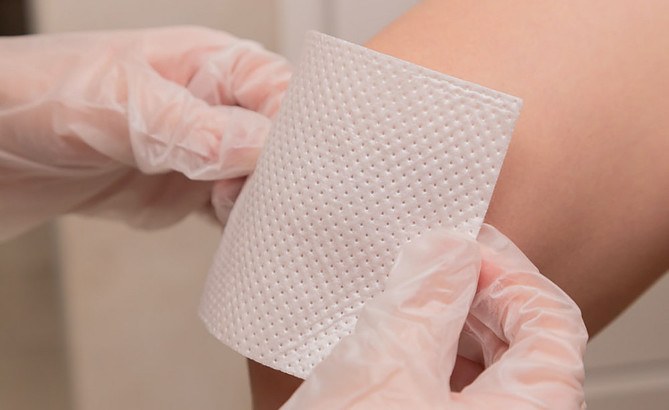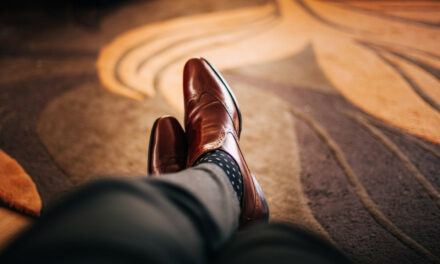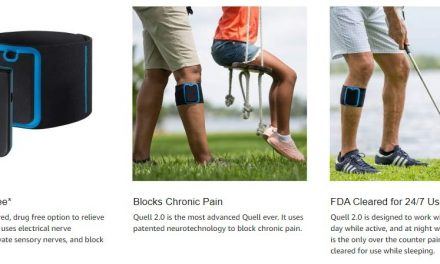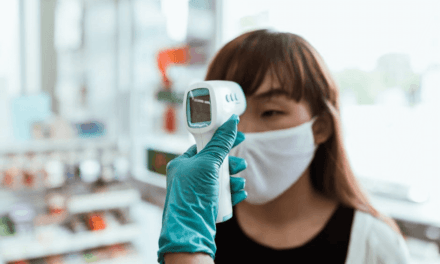People have different approaches to wound care. While some only go for intense treatment with dressings when the wound is severe, others prefer to just use the air-dry method. However, if you are caring for an elderly or someone with a chronic disease such as diabetes, there is no room for an error. This is where moist wound healing dressings can come in handy.
By creating moist wound conditions, you will accelerate your healing process, and reduce the risk of wound scarring.
This article covers the 15 best moist wound healing dressing options.
Let’s consider why moist wound healing can be a better option than dry or air-dry options.
Reasons Why You Should Go For Moist Wound Healing Options
- Moist wound healing will accelerate the healing of your skin
The healing process of wounds entails that new cells need to be formed to form new skin tissue. The growth and formation of cells thrive in moist conditions. This is why most moist wound healing process seeks to maintain optimal moist conditions to enable your skin to renew itself.
- Moist wound healing will help prevent scabs
When wounds are air-dried, they tend to form scabs. This is because, under air-dried condition, new skin tissue hardly forms, thereby making it difficult for wounds to close.
However, under moist conditions, scab formation is prevented. In moist wound healing conditions, growth and migration of new cells are promoted, making provisions for essential proteins that will help your wounds to close without forming new scabs.
- Moist wound healing will prevent scarring and ensure smooth and beautiful healing
Moist wound healing goes a long way to prevent scarring after healing
- Moist wound healing is skin-friendly
Most moist wound healing products incorporate skin-friendly materials. They also use materials that are free of fragrances, colorants, preservatives, and animal-derived substances.
Indications For Moist Wound Healing
When you have any wound that you want to treat, you must meet your health care professional. This is because there are different dressing options for different wounds. What worked for A might not work for B and vice versa.
Health care professionals always consider some background before administering treatment. They keep in mind their patients’ needs, history, and environment.
For example, a collagen dressing might work well for a younger patient with a full-thickness wound. Still, the same dressing might cause damage to an older patient with a similar wound but with more fragile skin.
Having noted these points, we will look out various indications for wound dressing.
Now let’s begin the list of the best moist wound healing dressing you could consider.
1. Alginate Dressings
They are produced by the Brown Seaweed Family, which contains naturally occurring calcium salts or sodium salts of Alginic acid. They are made of soft, non-woven calcium alginate fibers.
The major constituents of Alginates are mannuronic acid or guluronic acid. The amount of these acids influences the amount of exudate absorbed and the shape the dressing will retain.
Alginates exchange sodium ions in wound fluid for calcium ions. This makes them get partly dissolved when they come in contact with wound fluid to form a hydrophilic gel.
Alginates are highly absorbent. They tend to absorb 15 to 20 times their weight of fluid. This makes them highly suitable for wounds with high discharge.
They are not used on wounds with little exudates because they will adhere to the surface of the healing wound, thereby causing pain and damaging healthy tissue on removal.
Indications for Alginate dressings
- In moderately to heavily exuding partial-thickness wounds, they are indicated for use as primary treatment. An example of this wound is stage 2 pressure ulcers.
- They are also indicated for use in full-thickness wounds like stage 3-4 pressure ulcers, dermal wounds, and surgical wounds, dehisced wounds, tunneling wounds, sinus tracts, and donor sites.
- For infected wounds, alginates containing silver can be used.
- For post-operative wounds with minimal bleeding, Alginates can provide hemostasis.
2. Collagen Dressings
Collagen dressings act as scaffolding which enables new cells to grow, and they can be highly effective for wound healing. They are sheets, pads, particles, powders, and gels which are derived from bovine, equine, porcine, or avian sources.
Collagen dressings help the wound healing process in different ways like removing dead tissue, promoting the growth of new blood vessels, and also helping to bring the wound edges together, thereby speeding up the healing process.
Indications for collagen dressing
- They serve as primary dressing in the treatment of partial and full-thickness wounds such as skin grafts, donor sites, surgical wounds, tunneling wounds, infected and non-infected.
- They are also used for wounds with minimal to heavy exudates.
3. Antimicrobial Dressings
These antimicrobial dressings serve to deliver a sustained release of antimicrobial agents to the wound bed. This allows for a lower concentration of the agent, thereby reducing potential toxicity to host cells.
One common antimicrobial agent is silver. It can be in ionic or nanocrystalline form and has been in use particularly for the treatment of burns.
Iodine is also another antimicrobial agent used to lower microbiologic load in chronic wounds. The clinical setting can be used in any of its two forms, including povidone-iodine and cadexomer iodine.
Cadexomer iodine has a good absorptive property. It functions by releasing iodine slowly, thereby reducing bacterial load freeing the wounds of debris.
They generally prevent dressings
Indications for antimicrobial dressing
- They can be used as primary or secondary dressing in the treatment of draining, exuding, infected, and non-healing wounds where protection from bacterial infection is desired.
- It can include acute and chronic wounds, including burns, surgical wounds, diabetic foot ulcers, pressure ulcers, and vascular ulcers.
4. Composite Dressing
Composite dressing functions as wound covers. They combine physically distinct components into a single product, thereby providing multiple functions like bacteria barrier, absorption, and adhesion.
This dressing can be suitable for use on infected wounds. They come in different shapes and sizes.
Indications
- They are suitable for use in primary or secondary dressing in the treatment of small to heavily draining partial and full-thickness wounds like stage 2-4 pressure ulcers, dermal ulcers, and surgical incisions.
5. Contact Layer Dressing
These are thin, non-adherent sheets that are made of woven or perforated material which can be placed on an open wound bed. Placing it on an open wound bed protects the tissue from direct contact with other agents or dressings which are applied to the wound.
These dressing serves to provide an interface between the wound and the dressing. This helps to protect fragile healing tissues and to prevent new epithelium from sticking to the dressing.
Contact layer dressing can be used as a liner for deep wounds which need packing to ensure the removal of all packing materials.
They may be used with topical medications.
Indications for contact layer dressing
- They are mainly indicated for use as primary dressings on partial and full-thickness wounds which have minimal to heavy exudate, donor sites, and split-thickness skin grafts.
6. Foam Dressing
This is suitable for wounds that have varying degrees of severity. They also work well for injuries that exhibit odor.
Form dressings come as sheets and other shapes of foamed polymer solution with small open cells capable of holding fluids.
Foam dressing functions by absorbing exudates, from the surface of the wound. Once this is done, a suitable environment for faster healing is provided. Its capability to absorb depends on the thickness and composition of specific dressing.
One feature of this dressing is that it allows water vapor to enter, thereby keeping the area moist, and promoting faster healing.
They are available in various sizes and shapes, and come in a range of adhesives and non-adhesives options.
Indications for foam dressings
- They can be used for primary and secondary dressing for small to heavily exuding partial and full-thickness wounds such as stage 2-4 pressure ulcers, surgical wounds, and dermal ulcers.
- Foam dressing may be used on infected wounds, tunneling wounds, or cavity wounds, depending on the product. They can also be used to protect against friction areas.
7. Hydrocolloid Dressing
Hydrocolloid dressing is non-breathable dressings. They are self-adhesive and require no tapping. They are very comfortable to wear because of the flexible material they are made from. Also, they are suitable even for sensitive skin types.
The mechanism at which this dressing work is that they create moist conditions which help to heal certain wounds. Polysaccharides and polymers are used to coat the surface of the dressing. These polysaccharides and polymers function to absorb water from a gel, keep the wound clean, protect the wound from infection and facilitates the wound’s healing.
Furthermore, hydrocolloid dressings are impermeable to bacteria, gases, water, water vapor, and this makes them very effective when it comes to preventing infections. These dressings are long-lasting, bio-degradable, and very easy to apply. They can be used under compression products.
Indications for hydrocolloid dressings
- These hydrocolloids are indicated for use either as a primary or secondary dressing in the treatment of lightly to moderately exuding partial and full-thickness wounds like dermal ulcers, venous ulcers skin tears, lacerations, pressure injuries, or wounds with necrotic tissue or slough.
8. Hydrogel Dressing
Hydrogel dressings are well-designed to help improve patient comfort and reduce pain while helping to heal wounds or burns and also in fighting infections.
Most hydrogels are made with cooling gels, and this further makes them very effective at reducing pain and speeding up the healing process.
They maintain a moist wound healing environment, promote granulation and epithelization, and they also facilitate autolytic debridement.
Hydrogel dressings can be in 3 forms,
- amorphous hydrogels,
- impregnated hydrogels, and
- sheet hydrogels.
Amorphous hydrogels comprise glycerin and water-based products, and are mainly manufactured for the sole purpose of wound hydration.
Impregnated hydrogel wound dressings are gauzes and non-woven sponges ropes and strips saturated with an amorphous hydrogel.
Hydrogel wound dressing sheets are three-dimensional networks of cross-linked hydrophilic polymers. They are insoluble in water, and they interact with the aqueous solution by swelling.
Hydrogels have high water content. Therefore, they cannot be used to absorb a large amount of exudates.
Indications for hydrogel dressings
- They can be used as primary dressings to treat wounds especially minimally draining partial and full-thickness wounds like stage 2-4 pressure ulcers, deep wounds, minor burns, infected wounds, dermal ulcers, skin tears, for donor sites, radiation dermatitis and wounds with necrosis or slough.
9. Gauze and Non-woven Dressings
These are wound dressings that are dry woven or non-woven sponges. They are wraps with varying degrees of absorbency, which are based on design. The composition of this fabric may include cotton, polyester or rayon.
They are usually in bulk and can be found either sterile or non-sterile with or without an adhesive border.
They are designed for use in cleaning, packing, and covering a variety of wounds.
Indications of gauze and non-woven dressings
- They are usually indicated for use as a primary or secondary dressing over light to moderately draining wounds.
10. Gelling Fiber Dressing
These are absorbent wound covers, and they help manage drainage and removal of dead, damaged, and infected tissue from the wound.
The contents of gelling fibers are sodium carboxymethylcellulose, strengthening cellulose fibers, and other blended superabsorbent materials.
The mechanism at which this functions is that as wound fluid is absorbed into the dressing, a gel forms and this assists in maintaining a moist environment for optimal wound healing and the formation of granulation tissue.
These dressings can retain and control exudate levels, in other to reduce the risk of peri-wound maceration. They can also conform to various wound shapes and be removed in one piece.
Indications for gelling fiber dressing
- They can be indicated for chronic, acute, and partial or full thickness wounds, as well as various ulcers, pressure injuries and burns.
11. Medical-grade Honey Dressings
They contain active Leptospermum honey or Manuka honey as one of their main components.
Medical grade honey dressings are very useful in preparing the wound bed and promoting an optimal healing environment. They do this by reducing edema, lowering wound Ph and promoting autolytic debridement of slough and eschar. This autolytic debridement is a result of high sugar level in the honey.
Indications for medical-grade honey dressings
- They are indicated for use on partial and full-thickness wounds, acute or chronic wounds, such as venous insufficiency ulcers, stage 2-4 pressure ulcers, foot ulcers, first and second-degree burns, donor sites, traumatic wounds, surgical wounds, fungating wounds, superficial wounds and malodorous wounds.
12. Silicone Gel Sheets
Silicone gel sheets are soft wound covers. They are composed of cross-linked polymers, which are further reinforced with or bonded to mesh or fabric.
Silicone gel sheet dressings are made used in the treatment of scars, especially hypertrophic and keloid scars. They serve to improve appearance.
When there is a poorly designed surgical wound closure, too much tension applied to a surgical wound closure, wound infection, or partial and full-thickness burns, it can result in a hypertrophic scar. The hypertrophic scars stop at the original margins of the wounds.
An inherited alteration in collagen results in keloid scars. They usually extend beyond the original margins of the wound.
Indications of silicone gel sheets
- These silicone gel sheets are indicated for use in preventing or improving the appearance of old and new hypertrophic and keloid scars.
13. Specialty Absorptive and Super Absorbent Dressings
These are multi-layered wound covers. They provide either a semi-adherent or non-adherent layer, combined with highly absorptive layers of fibers like cellulose, cotton or rayon.
They are majorly designed to reduce adherence to the wound and also manage exudate.
Indications for specialty absorptive and super absorbent dressing
- They are indicated for use as primary or secondary dressing in the management of partial and full-thickness wounds like surgical incisions, lacerations, abrasions, burns, donor or skin graft sites, or any exuding wounds.
14. Transparent Dressings
Transparent film dressings cover the wound with a clear film. They are useful for medical professionals when they want to monitor wound healing.
The transparent feature makes it easier to identify potential complications and allows for easy and early spotting of infections. This is why they are normally used on incision sites, burns, ulcers, etc.
These dressings are breathable but impermeable to bacteria. They help to keep the wound clean and dry and also prevent infection.
They are very comfortable to wear because they are flexible.
15. Wound Filler Dressing
Wound fillers are beads, creams, foams, gels, ointments, pads, pastes, pillows, powders, strands, or other formulations which are usually non-adherent. They usually function to maintain a moist environment, and also manage exudate.
Indications for wound filler dressing
- They are normally indicated for use as a primary dressing in the treatment of minimally to moderately exuding partial- and full-thickness wounds, infected wounds, and also deep wounds that require packing to fill dead space.
16. Cloth Dressings
Of all the wound dressers, cloth dressing is the most commonly used dressings. They are often used to protect open wounds or broken areas of skin.
The dressing comes in different shapes and sizes from small coverings for fingers, to larger coverings for larger wounds. They also come in a roll option, and they are made to be cut to size.
Indications for cloth dressings
- They are very suitable for minor injuries such as grazes, cuts or areas of delicate skin
Conclusion
Different indications require different dressings. A close look at the various indications shows that similar indications might require different dressings. Therefore, you must always seek the help of a health professional when you have a wound that requires moist treatment.

















